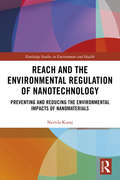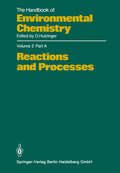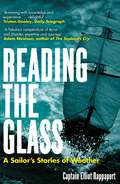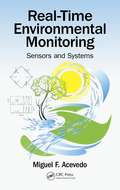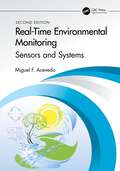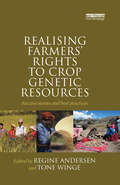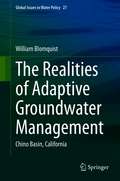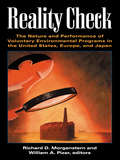- Table View
- List View
(Re-) Konstruktion von lokaler Urbanität
by Wolf-Dietrich Bukow Johanna Rolshoven Erol YildizDie städtische Lebensweise ist für unseren Alltag längst selbstverständlich. Und sie ist – weltweit – hoch attraktiv. Studierende, Singles, junge Familien, Geflüchtete, Menschen jeder Altersgruppe und jeglicher Herkunft wollen urban leben. Die städtische Lebensweise hat sich zu einer Lebenskonstruktion, zu einem Urbanitätsnarrativ entwickelt, aufgeladen mit Erwartungen für ein besseres Leben, mehr Anerkennung und neue gesellschaftliche Möglichkeiten. Gleichzeitig steht der urbane Raum aber auch für Segregations‑ und Homogenisierungstendenzen, für überteuerte Mieten und investorengesteuerte Gentrifizierung. Beklagt wird ein Mangel an wohnortnahen Arbeitsmöglichkeiten, das Verschwinden von lokalen Geschäften und Dienstleistungen. Es ist ein massives Konfliktpotential, das jetzt durch die Auswirkungen des Klimawandels zusätzlich forciert wird. Statt endlich den bislang wie selbstverständlich gelebten Alltag zu hinterfragen, werden rein technologische Maßnahmen zeitgeistkonform propagiert oder es wird alles gleich rein profitorientierten Investoren überlassen. Oder man beschwört einfach den status ante und sucht sich Sündenböcke für Fehlentwicklungen. In dieser zunehmend brisanten Situation wäre es entscheidend, sich Klarheit zu verschaffen über das, was eine Stadtgesellschaft mitbringt, was sie ausmacht und worin ihr nachhaltiges Potential besteht, und dann die zunehmenden gesellschaftlichen Herausforderungen gemeinsam kreativ anzugehen. Die (Re-)Konstruktion von lokaler Urbanität kann dazu ein erster Schritt sein.
REACH and the Environmental Regulation of Nanotechnology: Preventing and Reducing the Environmental Impacts of Nanomaterials (Routledge Studies in Environment and Health)
by Nertila KurajREACH and the Environmental Regulation of Nanotechnology presents a thorough and comprehensive legal analysis on the status of nanoscale chemicals under the EU’s REACH (Registration, Evaluation, Authorisation, and Restriction) regulation, asking whether it effectively safeguards human health and environmental protection. This book examines the European Commission’s claim that REACH offers the best possible framework for the risk management of nanomaterials. Through a detailed and meticulous analysis of the four phases of REACH, Kuraj assesses the capacity of the Regulation to protect human health and the environment against the potential harms associated with exposure to nanomaterials, and draws attention to the ways in which the specificities of nanoscale chemicals are (not) tackled by the current REACH framework. Overall, this book is an innovative and timely contribution to the ongoing debate on how to best address the unprecedented risks posed by the growing pursuit of nanotechnological innovation by the EU and global policy agenda. REACH and the Environmental Regulation of Nanotechnology will be of great interest to advanced students and scholars of environmental law and policy, environmental governance, science and technology studies, and environment and health.
REACH and the Environmental Regulation of Nanotechnology: Preventing and Reducing the Environmental Impacts of Nanomaterials (Routledge Studies in Environment and Health)
by Nertila KurajREACH and the Environmental Regulation of Nanotechnology presents a thorough and comprehensive legal analysis on the status of nanoscale chemicals under the EU’s REACH (Registration, Evaluation, Authorisation, and Restriction) regulation, asking whether it effectively safeguards human health and environmental protection. This book examines the European Commission’s claim that REACH offers the best possible framework for the risk management of nanomaterials. Through a detailed and meticulous analysis of the four phases of REACH, Kuraj assesses the capacity of the Regulation to protect human health and the environment against the potential harms associated with exposure to nanomaterials, and draws attention to the ways in which the specificities of nanoscale chemicals are (not) tackled by the current REACH framework. Overall, this book is an innovative and timely contribution to the ongoing debate on how to best address the unprecedented risks posed by the growing pursuit of nanotechnological innovation by the EU and global policy agenda. REACH and the Environmental Regulation of Nanotechnology will be of great interest to advanced students and scholars of environmental law and policy, environmental governance, science and technology studies, and environment and health.
REACH Beyond Borders: Europeanization Towards Global Regulation
by Ondřej FilipecThis book discusses how much other countries reflect the EU chemical regulation REACH (Registration, Evaluation, Authorization, Restriction of Chemicals), in the context of Europeanization theory. The main hypothesis verified in this book is that more trade with the EU means more Europeanization (as the non-EU companies exporting to the EU have an obligation to comply with EU rules according to the “No data, No Market” REACH provision). This book further points out that non-EU companies voluntarily adopt EU standards while this change has yet to be reflected on the policy level in non-EU countries, mainly for economic reasons.Exploring changes in national chemical regulatory policies among top chemical producers around the World brings new ideas into the process of Europeanization behind EU borders and provides useful material for academia, regulatory experts and export oriented chemical industry.
Reactions and Processes (The Handbook of Environmental Chemistry #2 / 2A)
by G. L. BaughmanEnvironmental Chemistry is a relatively young science. Interest in this subject, however, is growing very rapidly and, although no agreement has been reached as yet about the exact content and limits of this interdisciplinary discipline, there appears to be increasing interest in seeing environmental topics which are based on chemistry embodied in this subject. One of the first objectives of Environmental Chemistry must be the study of the environment and of natural chemical processes which occur in the environment. A major purpose of this series on Environmental Chemistry, therefore, is to present a reasonably uniform view of various aspects of the chemistry of the environ ment and chemical reactions occurring in the environment. The industrial activities of man have given a new dimension to Environ mental Chemistry. We have now synthesized and described over five million chemical compounds and chemical industry produces about hundred and fifty million tons of synthetic chemicals annually. We ship billions of tons of oil per year and through mining operations and other geophysical modifications, large quantities of inorganic and organic materials are released from their natural deposits. Cities and metropolitan areas of up to 15 million inhabitants produce large quantities of waste in relatively small and confined areas. Much of the chemical products and waste products of modern society are released into the environment either during production, storage, transport, use or ultimate disposal. These released materials participate in natural cycles and reactions and frequently lead to interference and disturbance of natural systems.
Reactive Transport in Soil and Groundwater: Processes and Models
by Gunnar Nützmann Paolo Viotti Per AagaardIn this book, the authors focus on the improvement of the scientific base for the development of environmental risk indicators measured by the presence of pollutants in water and porous media. In pursuit of a correct and complete numerical approach, they deliver insight into the understanding of integrated process, and also of modeling capabilities.
Read Write Inc. Phonics: Green Set 1 Non-fiction 5 Camping
by Gill MuntonThese decodable non-fiction titles provide extra practice for children learning to read. Topics include swimming and camping. The clear design introduces children to non-fiction features including captions, labels and diagrams.
Reading Literary Animals: Medieval to Modern (Perspectives on the Non-Human in Literature and Culture)
by Karen Edwards Derek Ryan Jane SpencerReading Literary Animals explores the status and representation of animals in literature from the Middle Ages to the present day. Essays by leading scholars in the field examine various figurative, agential, imaginative, ethical, and affective aspects of literary encounters with animality, showing how practices of close reading provoke new ways of thinking about animals and the texts in which they appear. Through investigations of works by Shakespeare, Aphra Behn, William Wordsworth, Charles Dickens, Virginia Woolf, and Ted Hughes, among many others, Reading Literary Animals demonstrates the value of distinctively literary animal studies.
Reading Literary Animals: Medieval to Modern (Perspectives on the Non-Human in Literature and Culture)
by Jane Spencer Derek Ryan Karen EdwardsReading Literary Animals explores the status and representation of animals in literature from the Middle Ages to the present day. Essays by leading scholars in the field examine various figurative, agential, imaginative, ethical, and affective aspects of literary encounters with animality, showing how practices of close reading provoke new ways of thinking about animals and the texts in which they appear. Through investigations of works by Shakespeare, Aphra Behn, William Wordsworth, Charles Dickens, Virginia Woolf, and Ted Hughes, among many others, Reading Literary Animals demonstrates the value of distinctively literary animal studies.
Reading the Glass: A Sailor's Stories of Weather
by Elliot Rappaport'Brimming with knowledge and experience . . . delightful'TRISTAN GOOLEY, DAILY TELEGRAPH'A fabulous compendium of terror and disaster, expertise and courage'ADAM NICOLSON, author of The Seabird's Cry'Evokes panoramas of sea and land with confident flair'WALL STREET JOURNALWhat's in a cloud? What separates a tropical storm from a winter blizzard? And what exactly is El Niño? Elliot Rappaport, a captain of traditional sailing ships, has spent three decades at sea, where understanding weather is the difference between life and death.From the icy seas of Greenland to the turbulent waters of the Strait of Gibraltar, from the powerful squalls near the equator to the ancient Polynesian explorers who ventured eastward against trade winds, Reading the Glass combines science and memoir to reveal the remarkable story of how weather has shaped our oceans, our history and ourselves.'An extraordinary book by a modern-day Melville . . . I can't recommend this book highly enough'MARK VANHOENACKER, author of Skyfaring'A gripping account of what weather is, how it feels to be in the middle of it, and what we can expect going forward!'BILL MCKIBBEN, author of The End of Nature
Reading Underwater Wreckage: An Encrusting Ocean (Environmental Cultures)
by Killian QuigleyPresenting a novel and needed theoretical model for interpreting shipwrecks and other drowned fragments-the histories they tell, and the futures they presage-as junctures of artefact and ecofact, human remains and emergent ecologies, this book puts the environmental humanities, and particularly multispecies studies, in close conversation with literary studies, history, and aesthetic theory.Earth's oceans hold the remains of as many as three million shipwrecks, some thousands of years old. Instead of approaching shipwrecks as either artefacts or “ecofacts,” this book presents a third frame for understanding, one inspired by the material dynamism of sea-floor stuff. As they become encrusted by oceanic matter-some of it living, some inanimate-anthropic fragments participate in a distinctively submarine form of material relation. That relation comprises a wide, and sometimes incalculable, array of things, lives, times, and stories. Drawing from several centuries of literary, philosophical, and scientific encounters with encrustations-as well as from some of the innumerable encrusted “art-forms” that inhabit the sea floor- this book serves anyone in search of better ways to perceive, describe, and imagine submarine matters.
Reading Underwater Wreckage: An Encrusting Ocean (Environmental Cultures)
by Killian QuigleyPresenting a novel and needed theoretical model for interpreting shipwrecks and other drowned fragments-the histories they tell, and the futures they presage-as junctures of artefact and ecofact, human remains and emergent ecologies, this book puts the environmental humanities, and particularly multispecies studies, in close conversation with literary studies, history, and aesthetic theory.Earth's oceans hold the remains of as many as three million shipwrecks, some thousands of years old. Instead of approaching shipwrecks as either artefacts or “ecofacts,” this book presents a third frame for understanding, one inspired by the material dynamism of sea-floor stuff. As they become encrusted by oceanic matter-some of it living, some inanimate-anthropic fragments participate in a distinctively submarine form of material relation. That relation comprises a wide, and sometimes incalculable, array of things, lives, times, and stories. Drawing from several centuries of literary, philosophical, and scientific encounters with encrustations-as well as from some of the innumerable encrusted “art-forms” that inhabit the sea floor- this book serves anyone in search of better ways to perceive, describe, and imagine submarine matters.
Real Option Analysis and Climate Change: A New Framework for Environmental Policy Analysis (Springer Climate)
by Benoit MorelThis book sets out to reframe the theory of real options so that it can be used to support environmental investments for climate change adaptation and mitigation. Climate change policy often involves making decisions that concern extended time periods, and doing so under considerable uncertainty. By expanding and broadening the framework of real options, this book first introduces readers to new ways of quantifying investment decisions that can much more effectively address the shape and size of the uncertainty than traditional approaches using Net Present Value. In turn, the second part of the book applies this new theoretical framework to climate change policy by presenting a number of examples, and by providing a general perspective on investment decisions related to climate change and how to prioritize them.
Real-Time Environmental Monitoring: Sensors and Systems
by Miguel F. AcevedoThe natural environment is complex and changes continuously at varying paces. Many, like the weather, we notice from day to day. However, patterns and rhythms examined over time give us the bigger picture. These weather statistics become climate and help us build an understanding of the patterns of change over the long term. Real-Time Environmental Monitoring: Sensors and Systems introduces the fundamentals of environmental monitoring, based on electronic sensors, instruments, and systems that allow real-time and long-term data acquisition, data-logging, and telemetry. The book details state-of-the-art technology, using a practical approach, and includes applications to many environmental and ecological systems. In the first part of the book, the author develops a story of how starting with sensors, you can progressively build more complex instruments, leading to entire systems that end with databases and web servers. In the second part, he covers a variety of sensors and systems employed to measure environmental variables in air, water, soils, vegetation canopies, and wildlife observation and tracking. This is an emerging area that is very important to some aspects of environmental assessment and compliance monitoring. Real-time monitoring approaches can facilitate the cost effective collection of data over time and, to some extent, negate the need for sample, collection, handling, and transport to a laboratory, either on-site or off-site. It provides the tools you need to develop, employ, and maintain environmental monitors.
Real-Time Environmental Monitoring: Sensors and Systems - Textbook
by Miguel F. AcevedoWritten 10 years after the publication of the first edition, this updated edition of Real-Time Environmental Monitoring: Sensors and Systems introduces the fundamentals of environmental monitoring based on electronic sensors, instruments, systems, and software that allow continuous and long-term ecological and environmental data collection. It accomplishes two objectives: explains how to use sensors for building more complex instruments, systems, and databases, and introduces a variety of sensors and systems employed to measure environmental variables in air, water, soils, vegetation canopies, and wildlife observation and tracking. This second edition is thoroughly updated in every aspect of technology and data, and each theoretical chapter is taught parallel with a hands-on application lab manual. Emphasizes real-time monitoring as an emerging area for environmental assessment and compliance and covers the fundamentals on how to develop sensors and systems Presents several entirely new topics not featured in the first edition, including remote sensing and GIS, machine learning, weather radar and satellites, groundwater monitoring, spatial analysis, and habitat monitoring Includes applications to many environmental and ecological systems Uses a practical, hands-on approach with the addition of an accompanying lab manual, which students can use to deepen their understanding, based on the author’s 40 years of academic experience Intended for upper-level undergraduate and graduate students, taking courses in civil and environmental engineering, electrical engineering, mechanical engineering, geosciences, and environmental sciences, as well as professionals working in environmental services, and researchers and academics in engineering.
Real-Time Environmental Monitoring: Sensors and Systems - Textbook
by Miguel F. AcevedoWritten 10 years after the publication of the first edition, this updated edition of Real-Time Environmental Monitoring: Sensors and Systems introduces the fundamentals of environmental monitoring based on electronic sensors, instruments, systems, and software that allow continuous and long-term ecological and environmental data collection. It accomplishes two objectives: explains how to use sensors for building more complex instruments, systems, and databases, and introduces a variety of sensors and systems employed to measure environmental variables in air, water, soils, vegetation canopies, and wildlife observation and tracking. This second edition is thoroughly updated in every aspect of technology and data, and each theoretical chapter is taught parallel with a hands-on application lab manual. Emphasizes real-time monitoring as an emerging area for environmental assessment and compliance and covers the fundamentals on how to develop sensors and systems Presents several entirely new topics not featured in the first edition, including remote sensing and GIS, machine learning, weather radar and satellites, groundwater monitoring, spatial analysis, and habitat monitoring Includes applications to many environmental and ecological systems Uses a practical, hands-on approach with the addition of an accompanying lab manual, which students can use to deepen their understanding, based on the author’s 40 years of academic experience Intended for upper-level undergraduate and graduate students, taking courses in civil and environmental engineering, electrical engineering, mechanical engineering, geosciences, and environmental sciences, as well as professionals working in environmental services, and researchers and academics in engineering.
Realising Farmers' Rights To Crop Genetic Resources: Success Stories And Best Practices
by Regine Andersen Tone WingeFarmers' rights are essential for maintaining crop genetic diversity, which is the basis of all food and agricultural production in the world. The International Treaty on Plant Genetic Resources for Food and Agriculture recognizes Farmers' rights and provides for relevant measures. However, implementation is slow, and in many countries there is resistance. This book shows the necessity of realizing Farmers' rights for poverty alleviation and food security, the practical possibilities of doing so, and the potential gains for development and society at large. It provides decision-makers and practitioners with a conceptual framework for understanding Farmers' rights and success stories showing how each of the elements of Farmers' rights can be realized in practice. Such success stories have brought substantial achievements as regards one or more of the four elements of Farmers' rights: the rights of farmers to save, use, exchange and sell farm-saved seed; the protection of traditional knowledge; benefit- sharing; and participation in decision-making. These examples are not perfect, but challenges encountered on the way also offer important lessons. They represent different regions and localities, including Europe, Asia, Africa and Latin America, as well as various categories of stakeholders and types of initiatives and policies.
Realising Farmers' Rights To Crop Genetic Resources: Success Stories And Best Practices (PDF)
by Regine Andersen Tone WingeFarmers' rights are essential for maintaining crop genetic diversity, which is the basis of all food and agricultural production in the world. The International Treaty on Plant Genetic Resources for Food and Agriculture recognizes Farmers' rights and provides for relevant measures. However, implementation is slow, and in many countries there is resistance. This book shows the necessity of realizing Farmers' rights for poverty alleviation and food security, the practical possibilities of doing so, and the potential gains for development and society at large. It provides decision-makers and practitioners with a conceptual framework for understanding Farmers' rights and success stories showing how each of the elements of Farmers' rights can be realized in practice. Such success stories have brought substantial achievements as regards one or more of the four elements of Farmers' rights: the rights of farmers to save, use, exchange and sell farm-saved seed; the protection of traditional knowledge; benefit- sharing; and participation in decision-making. These examples are not perfect, but challenges encountered on the way also offer important lessons. They represent different regions and localities, including Europe, Asia, Africa and Latin America, as well as various categories of stakeholders and types of initiatives and policies.
Realising the 'Triple Dividend of Resilience': A New Business Case for Disaster Risk Management (Climate Risk Management, Policy and Governance)
by Swenja Surminski Thomas TannerWhy aren’t we investing more in disaster resilience, despite the rising costs of disaster events? This book argues that decision-makers in governments, businesses, households, and development agencies tend to focus on avoiding losses from disasters, and perceive the return on investment as uncertain – only realised if a somewhat unlikely disaster event actually happens. This book develops a new business case for investment based on the multiple dividends of resilience. This looks beyond only avoided losses (the first dividend) to the wider benefits gained independently of whether or not the disaster event occurs. These include unleashing entrepreneurial activities and productive investments by lowering the looming threat of losses from disasters and enabling businesses, farmers and homeowners to take positive risks (the second dividend); and co-benefits of resilience measures beyond just disaster risk (the third dividend), such as flood embankments in Bangladesh that double as roads, or wetlands in Colombo that reduce urban heat extremes.
Realism and the Climate Crisis: Hope for Life
by John FosterIn the teeth of climate emergency, hope has to remain possible, because life insists on it. But hope also has to be realistic. And doesn’t realism about our plight point towards despair? Don’t the timid politicians, the failed summits and the locked-in consumerism all just mean that we have left things far too late to avoid catastrophe? There is a deeper realism of transformation which can keep life powerful within us. It comes at the price of accepting that our condition is tragic. That, in turn, calls for a harsher, more revolutionary approach to the demands of the emergency than most activists have yet been prepared to adopt. This is a book to think with, to argue and disagree with – and to hope with.
Realism and the Climate Crisis: Hope for Life
by John FosterIn the teeth of climate emergency, hope has to remain possible, because life insists on it. But hope also has to be realistic. And doesn’t realism about our plight point towards despair? Don’t the timid politicians, the failed summits and the locked-in consumerism all just mean that we have left things far too late to avoid catastrophe? There is a deeper realism of transformation which can keep life powerful within us. It comes at the price of accepting that our condition is tragic. That, in turn, calls for a harsher, more revolutionary approach to the demands of the emergency than most activists have yet been prepared to adopt. This is a book to think with, to argue and disagree with – and to hope with.
The Realities of Adaptive Groundwater Management: Chino Basin, California (Global Issues in Water Policy #27)
by William BlomquistThis book has three primary objectives. The first objective is to provide scholars with a more realistic view of adaptive management, without arguing against adaptive management. Adaptive management is necessary as well as desirable, but it is not easy, and demonstrating that through the Chino Basin experience is an important goal. The second objective is to provide practitioners with encouraging yet cautionary lessons about the challenges and benefits of an adaptive approach – in similar fashion as the first objective, the goal here is to endorse the adaptive approach but in a clear-eyed manner that clarifies how hard it is and how much it requires. A third objective is to show all audiences that resource governance systems can fail, change, and succeed. There is no such thing as an ideal institutional design that is guaranteed to work; rather, making institutional arrangements work entails learning and adjustment when they begin to show problems as they inevitably will.
Reality Check: The Nature and Performance of Voluntary Environmental Programs in the United States, Europe, and Japan
by Richard D. Morgenstern William A. PizerSince the early 1990s, voluntary programs have played an increasingly prominent role in environmental management in the U.S. and other industrialized countries. Programs have attempted to address problems ranging from climate change and energy efficiency, to more localized air and water pollution problems. But do they work? Despite a growing theoretical literature, there is limited empirical evidence on their success or the situations most conducive to the approaches. Even less is known about their cost-effectiveness. Getting credible answers is important. Research to date has been largely limited to individual programs. This innovative book seeks to clarify what is known by looking at a range of program types, including different approaches adopted in different nations. The focus is on assessing actual performance via seven case studies, including the U.S. Climate Wise program, the U.S. EPA's 33/50 program on toxic chemicals, the U.K. Climate Change Agreements, and the Keidanren Voluntary Action Plan in Japan. The central goals of Reality Check are understanding outcomes and, more specifically, the relationship between outcomes and design. By including in-depth analyses by experts from the U.S., Europe, and Japan, the book advances scholarship and provides practical information for the future design of voluntary programs to stakeholders and policymakers on all sides of the Atlantic and Pacific.
Reality Check: The Nature and Performance of Voluntary Environmental Programs in the United States, Europe, and Japan
by Richard D. Professor Morgenstern William A. PizerSince the early 1990s, voluntary programs have played an increasingly prominent role in environmental management in the U.S. and other industrialized countries. Programs have attempted to address problems ranging from climate change and energy efficiency, to more localized air and water pollution problems. But do they work? Despite a growing theoretical literature, there is limited empirical evidence on their success or the situations most conducive to the approaches. Even less is known about their cost-effectiveness. Getting credible answers is important. Research to date has been largely limited to individual programs. This innovative book seeks to clarify what is known by looking at a range of program types, including different approaches adopted in different nations. The focus is on assessing actual performance via seven case studies, including the U.S. Climate Wise program, the U.S. EPA's 33/50 program on toxic chemicals, the U.K. Climate Change Agreements, and the Keidanren Voluntary Action Plan in Japan. The central goals of Reality Check are understanding outcomes and, more specifically, the relationship between outcomes and design. By including in-depth analyses by experts from the U.S., Europe, and Japan, the book advances scholarship and provides practical information for the future design of voluntary programs to stakeholders and policymakers on all sides of the Atlantic and Pacific.

